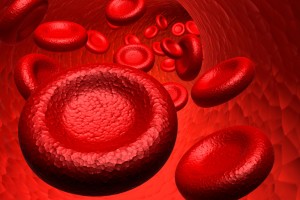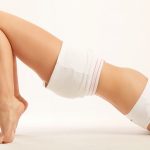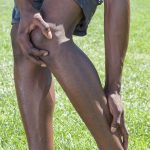A Physio’s Guide to PRP Therapy and Injections
PRP injections have recently gained popularity as a treatment option for stubborn tendon injuries. As a physiotherapist over the last 12 months I have had more and more clients ask me about PRP and its effectiveness. I have also observed an increase in the number of clients who have had PRP injections.
Normally it is the treating physiotherapist, sports doctor, or even general practitioner who will suggest that PRP may be a viable treatment option in an attempt to facilitate tendon recovery and healing.
WHAT IS PRP THERAPY?
PRP is an acronym for Platelet Rich Plasma therapy which is administered through a series of injections.
PRP therapy is performed by taking venous blood from a patient. The blood is then handled by placing it in a centrifuge where it will be spun at high speed in order to separate the blood’s constituents. Following time in the centrifuge the blood will appear to be in three distinct ‘zones’: red blood cells(bottom), blood plasma (middle), and platelet rich plasma (top). The ampoules into which the blood are placed contains a separating gel. 6mls of platelet rich plasma are required for injection.
It is the platelet rich plasma which is kept and later injected into the affected tendon or site of injury. This platelet rich plasma has concentrated platelets of which the platelets may be best thought of as little bundles of various growth factors and healing factors, which are believed to allow healing to occur faster.
Interestingly the best platelet rich plasma has the white blood cells removed.

WHO IS PRP INJECTION THERAPY POTENTIALLY FOR?
Typically clients who have suffered for a lengthy period with frustrating and slow to improve tendon injuries such as plantar fasciitis, achilles tendon, patellar tendon, tennis elbow, and hamstring tendon injuries , can be introduced to the PRP therapy as a possible ‘next step’ in their quest to function without pain.
PRP can also be used as a treatment for recalcitrant joint pains such as knee, shoulder, or hip joint pain. Typically these will be people who have significant ongoing pain despite the use of pain medication, weight loss, and/or physiotherapy treatment.
HOW IS PRP THERAPY PERFORMED?
PRP therapy is performed with the following steps:
-
The procedure involves drawing two lots of blood from the patient’s arm.
-
Local anaesthetic is injected near the site of injury after a few minutes the PRP is injected.
-
The benefits should be noticed about 4-8 weeks after the first injection.
-
A second injection is usually recommended one month later (this is normally recommended to lengthen the period of symptom pain relief).
-
Further ‘top-up’ injections may also be recommended depending on the patient’s symptoms at 6, 12 or 24 months.
WHO PERFORMS PRP THERAPY?
PRP injections may be administered via Sports Doctors, Radiologists, or Orthopaedic surgeons
WHAT DOES THE RESEARCH SAY ABOUT PRP THERAPY?
The use and clinical validation of PRP as a treatment option for joint and tendon injuries is still in the relatively early stages.
Perhaps the most guiding of recent studies was a 2014 Cochrane Review which cited 19 studies that looked at the use of PRP injections in studies compared against a variety of controls (such as no PRP injections, dry needling, placebo injection, and blood injection). These 19 studies involved in excess of 1000 patients (subjects).
The 19 studies covered 8 different injury types ranging from post-operative knees to elbows, and Achilles tendon problems.
The Cochrane Review cites that:
The quality of the evidence is very low, partly because most trials used flawed methods that mean their results may not be reliable. The trials also used different ways of preparing and applying the platelet-rich plasma.
The review further reports that data could only be pooled from 11 of the 19 studies with a total of 45% of the 1088 subjects.
The conclusions drawn were:
1. Very weak or low quality evidence existed for a slight benefit of PRP injections for pain relief in the short term (up to three months following injection).
2.PRP injections were reported to not make a significant difference in function in the short, medium or long term.
3. In summary the collaborators of the review stated that:
The available evidence is insufficient to support the use of PRT for treating musculo-skeletal soft tissue injuries or show whether the effects of PRP vary according to the type of injury.
A recent study concluded that PRP injection therapy was not efficacious for chronic tennis elbow sufferers -click HERE.
WHAT ARE THE SIDE EFFECTS?
-
Common side effects can include post injection pain for 24-48 hours, or swelling & bruising at the injection site.
-
Most patients will experience varying degrees of pain and discomfort the next day.
-
Less common side effects may include: dizziness, nausea or feeling unwell.
-
Fortunately severe complications, such as infection are very rare.
WHAT IS THE COST?
The cost of injections is typically in the vicinity of $300-$500 per injection. PRP injections do not attract a Medicare Rebate.
MY CLOSING THOUGHTS:
Despite the paucity of current evidence that exists I am of the opinion that PRP therapy and injections may be a viable next step and treatment option in particular for patient’s suffering from recalcitrant and slow responding tendon injuries.
Personally I have carried a low grade Achilles tendon niggle for the better part of 12 months now, even after focussed periods of rehabilitation. While it has not forced me to stop running I notice that the tendon is still tender to touch. If my pain persists any longer than another 6 months I will likely pursue PRP myself.
TIPS:
-
Drink lots of water and avoid caffeine (a diuretic) before you go to have your blood taken. This will make the blood drawing and vein location process easier.
-
Most patients will feel a slight sting on injection of the PRP. A local anaesthetic is used.
-
People who suffer from platelet disorders cannot have PRP-if unsure check with your GP.
-
You can drive your vehicle after injections.
-
The injection site must be kept clean and dry for 24hrs
-
Vigorous exercise and alcohol is best avoided 24hrs following the injection.
-
Build back into exercise and activity gradually following PRP injections.
If you enjoyed this article or have your own experience to share please post a comment.
Brad Beer (APAM)
POGO Founder, Author, and Physiotherapist
REFERENCES:
-
The platelet rich plasma Patient Handout clinic http://www.prpclinic.com.au/
-
Moraes VY, Lenza M, Tamaoki M, Faloppa F, Belloti J. Platelet-rich therapies for musculoskeletal soft tissue injuries. Cochrane Database of Systematic Reviews 2014, Issue 4. Art. No.: CD010071. DOI: 10.1002/14651858.CD010071.pub3 – See more at: http://summaries.cochrane.org/CD010071/MUSKINJ_platelet-rich-therapies-for-musculoskeletal-soft-tissue-injuries#sthash.1Hw7Nd5w.dpuf
-
[…] A physio’s information to PRP treatment and injections HERE>> […]
[…] A physio’s information to PRP treatment and injections HERE>> […]
[…] A physios’ guide to PRP Therapy and Injections […]
Leave a Comment








This was a very informative article. I am getting PRP for my knees in September along with stem cells. I hope it helps because I have suffered with knee pain for about 10 years and nothing short of a replacement has helped.
Hi Judy,
I’m pleased you found the article informative.
I hope you are making progress.
Where is home for you?
Regards Brad Beer
Florida USA
Hi, I have osteoarthritis in my right hip. Pain started about 6 years ago. I was going to have a hip replacement but hated that idea. Tried Cortisone inj which was a total disaster – left me in really bad pain for 8 months. Then I tried PRP injection. The results have been amazing. I first had 1 inj about 4 yrs ago. They seem to last about 8 months. In Jan this year I had an inj then a month later I had another hoping to get 12 maths but today I had another – 10 months later. I couldn’t live without PRP. It allows me to live pain free – 95 percent of the time. I can do just about anything – renovating , painting, housework etc. I try to avoid squatting as that aggravates it. If I do get pain (rarely) I take Voltaren for two days which nips the inflammation in the bud. It’s a fairly painless procedure. Sometimes tender for a couple weeks – then – No Pain 😀 Thank God ! A miracle that uses your own blood to heal. Julia Gold Coast Australia
Thats great Julia!
Hi Brad. Great to read your article before I had the PRP which happened yesterday. This was for “Gluteus insertional tendinopathy , tearing of the gluteus minimus & medius and adjacent trochanteric bursitis”!!!! I have been unable to sit for longer than 5 minutes for about 4 months. Fortunately I went armed with paracetamol. Procedure very painful however assured it works but forgot to ask more questions. They said no squatting and no stairs as it will stretch it. I also understand not to take any form of anti-inflammatory medication which I presume is because the blood actually does need to clot and heal? I am an avid gym member, golfer and walker (well I WAS). When can I squat and take to the stairs please? Susan Tweed Heads Australia
Hi Susan, Thank you for your comment. Sorry to read that you have been having difficulty with your gluteus tendinopathy. Like any tendinopathy time is one of the key elements in getting back to full function, as is the appropriate loading to restore the tendon’s ability to deal with load. You are right in avoiding NSAIDs immediately following the injection. Re squats and stairs I’d say return to those at approx 7 days (hard to be precise as I am not full familiar with your history). I suggest listening to Ep 62 of the podcast I host that I did with Dr Peter Malliaras on how to get on top of tendon pathology: HERE>> Episode 62 The Physical Performance Show
You will require progressive exercises in order to get fully on top of your tendinopathy. Please let me know if you require any further help.
Regards Brad Beer
Hello, I just had A-cell and PRP injections done for my hair. I drank a cup of coffee the following day, I read that post from my treatment I need to avoid caffeine. Is one cup of coffee bad? Also is smoking medical marijuana bad during post procedures?
David –
Hi David,
Thanks for your questions. I think you will be just fine.
Regards Brad Beer
I Had PRP for a bursa in my hip and realised about 3 weeks late I had no pain, just 1 treatment about 3 years ago. I had carpal tunnel syndrome in my right arm/ hand to the point it was interfering with my sleep. I had PRP, 2 treatments a month apart about 1 year ago, now it doesn’t bother me.
prior to my GP doing PRP, she gave me prolotherapy 3times in my sacroiliac joint for chronic back pain, now no pain that was about 6 years ago. 3 weeks ago I had PRP in my wrist so am waiting to see how that stacks up, the swelling is going down gradually, but still painfull, probably because I still need to use my hands a lot. I am in my mid 60’s and can’t afford down time, I have to keep working, so I am greatfull for who ever discovered PRP.
Cheers
Nicky
I’m pleased you have had success Nicky.
Thanks for sharing your experiences.
Regards Brad Beer
I am 64 years old. I had a water skiing accident May 27th, 2018. The injury tore adductor longus muscle and rectus abdominus off of pubic bone on left side. MRI showed this avulsion as well as bilateral medium grade tendinopathy .
The net result of this injury 5 months later is quite the opposite of what I expected. The muscle tear scarred in and healed. The tendinopathy has worsened. This is partially due to a few over the front falls when I returned to water skiing in early September.
I have had PRP injections in both sides and it has made the pain different and worse.
Can someone explain to me why PRP worsened the condition?
Hi Larry,
Sorry to read about your significant injury.
There may be numerous contributing factors as to why your pain has flared-not typical for a PRP injection to necessarily worsen symptoms.
The key will be progressive loading with exercise of the tendon over time (adjunctuve therapies such as PRP will not be the main stay of your rehabilitation).
Stay in touch and if you get stuck do let me know.
Regards Brad Beer
I had promised on my shoulder 2 years ago. I couldn’t sleep, couldn’t lite my arm even to take a bath. With prp. I can sleep, lift my arm take a bath and be comfortable I’m now taking a PRP for my knee I’m looking for a 6S I also have a back problem a spinal stenosis and I’m looking forward to PRP helping me there
Thanks for your comments Isabelle-I hope you are getting on top of your lower back pain.
Regards Brad Beer
Sports & Exercise Physio
Hi,
I stretched the ligature in my SI joint and have been going through hell for the past 2 years. Prolotherapy didn’t do much and physio seems to have limited effect.
The best thing for me has been cortisone injections but I get only about 4-6 weeks relief.
My last cortisone injection was December 4 – how long do I need to wait to start PRP – 5 months total?
Thanks!
Hi Rich,
Thanks for your Q.
The stretched ligature you speak of for SIJ> how as this diagnosed?
Once I know a little more can better comment.
Regards Brad Beer
Sports & Exercise Physiotherapist
I was diagnosed with hypermobility of my si joint by a physiotherapist.
I have OCD and cracked my SI joint by crossing my left leg over my right knee and would press down on the left knee until it caused my SI joint to crack. I did this several dozen times over a few months, not really thinking about it,
After that, I started noticing a locking sensation in the right SI joint that started to cause constant myofascial pain and cracking in the right side as well.
When I demonstrated what I did my physiotherapist said I went well past their range of motion tests on my SI joint and very likely had stretched the ligature so that it no longer holds my si joint steady. My nurse practitioner seconded the diagnosis.
I have chronic shoulder issues. Bustitus , tendinitis, impingement, hills each, rotor cuff tear and just had both shoulders. Inn plasma today. Sore now but 4 years ago got tennis elbow and prp inj worked so well straight away never any pain since I have done shoulders hopefully works as good . Time will tell
Very nice article with lots of information. Thanks for sharing this one with us.